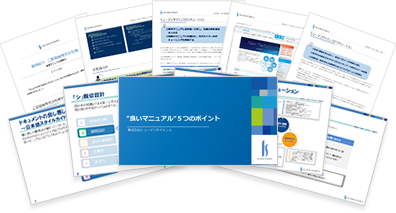What is a user-friendly manual for users?

Have you heard of the term "usability"? Usability is a word that describes the ease of use for websites and software. For modern people who are always pressed for time, "usability" is an important factor for increasing market share.
And this "usability" is becoming increasingly necessary for all outputs.
Have you ever thought about the "ease of use" in the following way?
"I hear that ease of use is important, but it's difficult to think from the user's perspective..."
"I would love to know what points to pay attention to in order to make it easier to use."
Here, we will introduce what makes a user-friendly manual for users.
We will explain the reasons for reviewing manuals and what a user-oriented manual is.
- Table of Contents
1. Reasons to Review Manual Content

Before introducing what a user-oriented manual is, in this chapter we will introduce the reasons why you should review your manual.
The reason why you should review the manual is simply because it tends to be written from the developer's perspective.
For example, are you not troubled by the following?
"Despite having a manual, the number of inquiries does not decrease, causing a burden on business."
"Even though it is written in the manual, it is not being implemented."
One of the reasons for this is the manual written from a developer's perspective. As users may not understand even after reading the manual, they tend to contact the help desk frequently.
Difficult manuals from a developer's perspective can increase inquiries to customer support, help desks, etc., and put a heavy burden on the company. Above all, it can also lead to a decrease in customer satisfaction.
Striving for user-friendly and easy-to-understand manuals from a customer's perspective is also important for improving the company's reputation.
2. What is a User-Centered Manual?

In the previous chapter, we introduced the reasons why you should review your manual. In this chapter, we will introduce what a user-oriented manual is.
User-oriented means taking the perspective of the reader. We will introduce three points for taking the perspective of the reader.
① Point 1 for taking a user's perspective: Make it easy to see and easy to read.
The first point to make a user-oriented manual is to make it easy to read and understand.
Difficult to see and difficult to read manuals will become something that users avoid. In the worst case, it may even end up being shelved. In that case, all the effort put into creating the manual will go to waste and the knowledge will not be established in the field.
To do so, pay attention to the following points and create a manual.
1. Japanese written in the manual is correct and has a readable rhythm.
2. Properly arranging the layout
For example, when placing images and text on the screen, fix the display position of each one.
3. Place figures and tables as needed
As the saying goes, "seeing is believing", inserting figures and tables will help users understand better than just explaining with words.
4. Pay attention to the size, thickness, color, and line spacing of the text
If the size and line spacing of the text are not appropriate, the manual will be difficult to read.
Also, if the text is all black, it will be difficult to understand which parts are important. As the creator, let's make an effort to change the color of the text in important points.
2. Points for Taking a User's Perspective: Make it Easy to Find
Point 2 for creating user-friendly manuals is to make them easy to find.
By being able to quickly access the desired information, users can use the manual without feeling stressed.
Do not forget that manuals are used by various people. They range from those who are touching the product or service for the first time, to those who are somewhat familiar, to those who have a gap in their knowledge.
For example, those who are touching our products or services for the first time will probably read the manual from the beginning. They would want to read pages such as "Introduction" or "Basic Usage".
On the other hand, what about those who have some experience? They probably have specific pages they want to read when they are in trouble or have forgotten something. A manual that allows them to easily access the desired page is what we consider to be a user-friendly manual.
One key point to make it easy to find necessary information quickly is to make sure that the content can be understood from the titles of chapters and headings.
For example, let's assume you want to know how to open Yahoo! homepage on Google search. Most people would probably look for the desired information from the table of contents. In that case, which of the following would be easier to understand?
A: Open the portal site from the browser search
B: Open Yahoo! homepage on Google search
Most people will choose "B". "B" contains the name of the search engine and portal site to be used, and the specific usage scene and purpose can be read from the table of contents. The searcher can also determine the target. If specific content is not described like "A", it is not clear which page to open.
By adding clear titles and headings, the desired information becomes easily visible and leads to a more user-friendly manual.
3. Points for taking a user's perspective: Match the level of knowledge of the manual's target audience
The three key points for creating a user-oriented manual are to tailor it to the knowledge level of the target audience.
To view from the user's perspective, first be aware of whose perspective it is. The level of description will change depending on whether it is for someone who is touching the product or service for the first time, or for those who have some experience.
To match the knowledge level of the target audience for the manual, pay attention to the following.
1. Set the target user at the initial stage of manual creation
At the initial stage of manual creation, determine the target user. By deciding the direction of the manual, any inconsistencies during manual creation will be eliminated.
2. Have a third party review it
Even if the instructions are easy for the manual creator to understand, they may be difficult for actual users to understand. Therefore, have a third party review the manual. It is ideal to have it checked by various types of people. In particular, receiving feedback from the intended users will make the manual more user-friendly.
Related Blogs
[Thorough Explanation] How to Create Foolproof Manuals3. Achieving Improvement in Manual Quality

The previous chapter introduced what a user-oriented manual is. In this chapter, we will introduce examples of improving the quality of manuals.
Case Studies
Hammock Corporation
Improvement Content
Improvement of product manuals and creation of templates
Introduction Background
Hammock Corporation sells software called "Tablet Form" that allows for handwriting input on tablets. The manual included with the product is created by the developers themselves using Word and distributed as a PDF.
Issues and Challenges
- The manual is created from the perspective of the development team, not from the user's perspective.
- It is created using Word, but I am having trouble making it into a more readable layout.
- Considering the characteristics of the product, I also want to create an HTML help file that is easy to view and search on a computer or tablet.
Human Science Proposal Content
1. Propose improvements to product manuals
① Review the structure of the table of contents
Make it easier for users to search by changing the title from the function name to the purpose
Example: If the operation to display Yahoo! homepage is displayed on Google search
Change from "Search" to "To display Yahoo! homepage"
2. Improve the content
Example: Assist user understanding by including the purpose of each chapter in the lead sentence
2. Creating Templates
① Create a template with design in mind
Create a Word template that balances both readability and ease of updating with a visually appealing design.
②Creating Writing Rules and Checklists
Customizing writing rules and checklists for Hammock Corporation when creating manuals.
Customer Feedback
"We were able to understand our true challenges and receive proposals that not only improve our manuals, but also anticipate future operations."
"We are satisfied with the quality of the deliverables and plan to further establish our in-house production techniques."
Here, we have introduced actual examples of improving manual quality based on Hammock Corporation's case. Manual creation may seem simple, but there are various approaches to it. Finally, we would like to introduce the features of Human Science's manual creation service and conclude today's presentation.
Feature 1: Visualization by Experienced Consultants
Human Science's experienced consultants will visualize the current manual. We will objectively evaluate the clarity of the manual and compare it with manuals from other companies. We will provide specific proposals based on a third-party perspective from professionals.
Features ②: Evaluation based on a large number of achievements and many years of know-how
Human Science Co., Ltd. has a history of over 20 years and has a track record of creating manuals for 215 companies and 2854 projects. As a result, we have a deep understanding of what makes a manual easy to understand in a systematic way.
We will evaluate your company's manual from two perspectives.
① Evaluation from the perspective of whether the manual meets the requirements that users are looking for
② Evaluation from the perspective of manual creation techniques

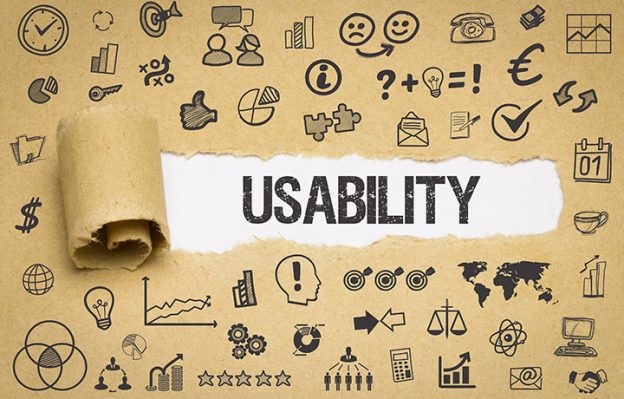

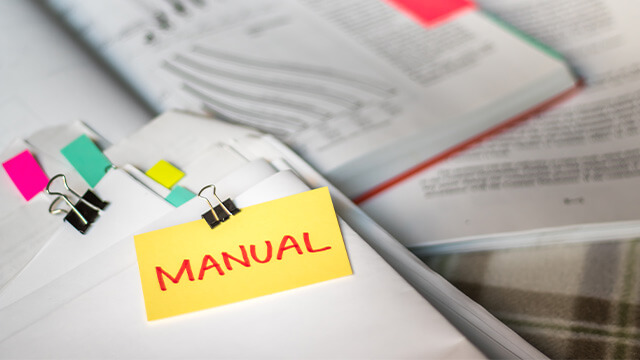
















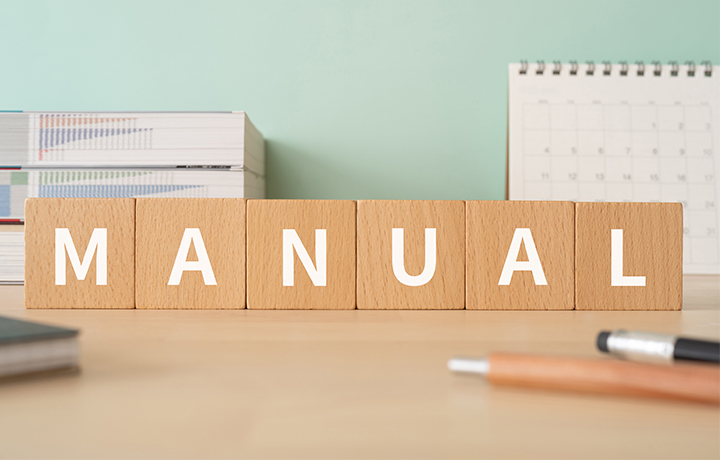





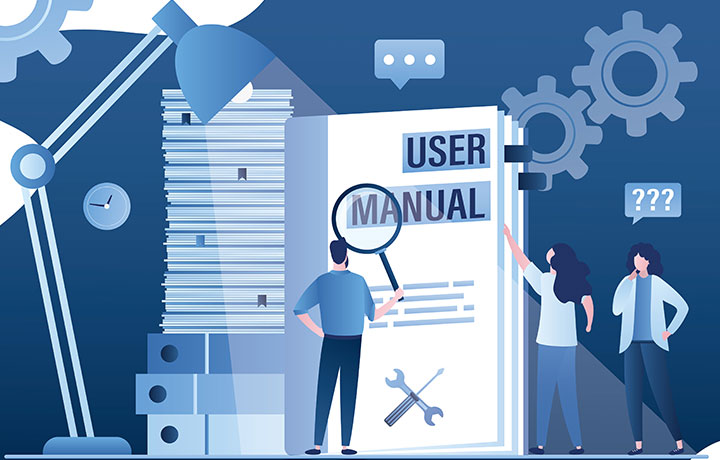



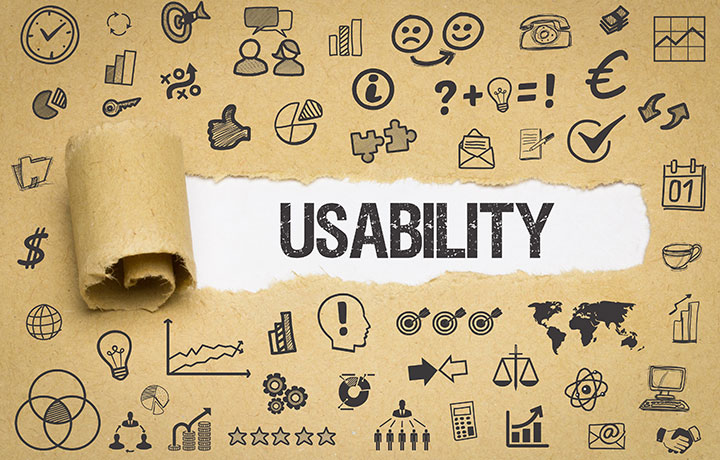



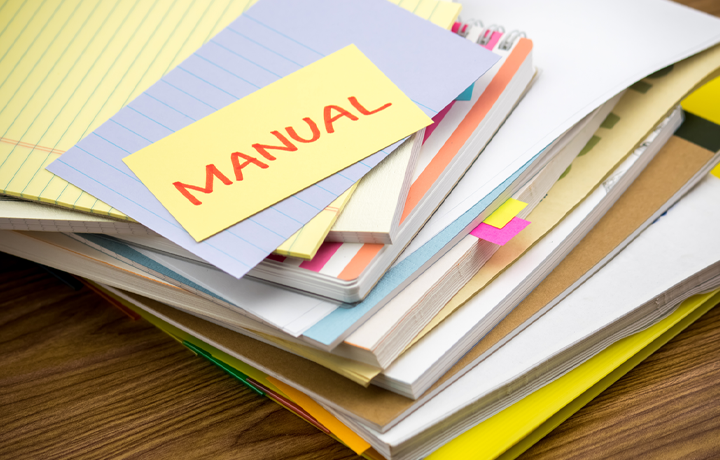

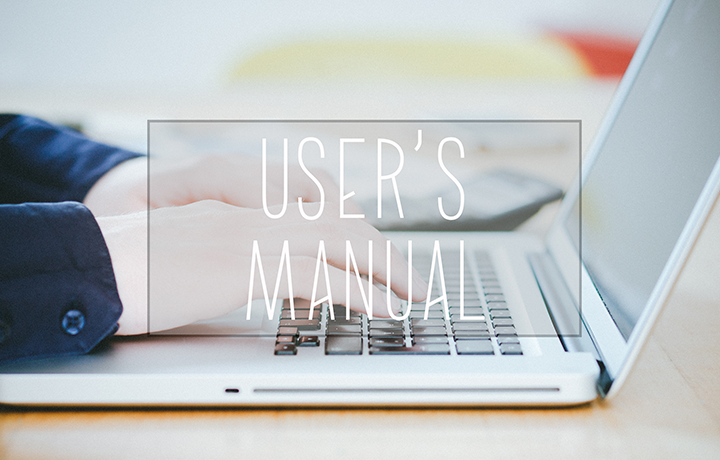











 Manual Creation
Manual Creation Director, Writer
Director, Writer In-house support
In-house support Video
Video Manual
Manual Manual Creation
Manual Creation Manual Creation
Manual Creation Manual Documentation
Manual Documentation